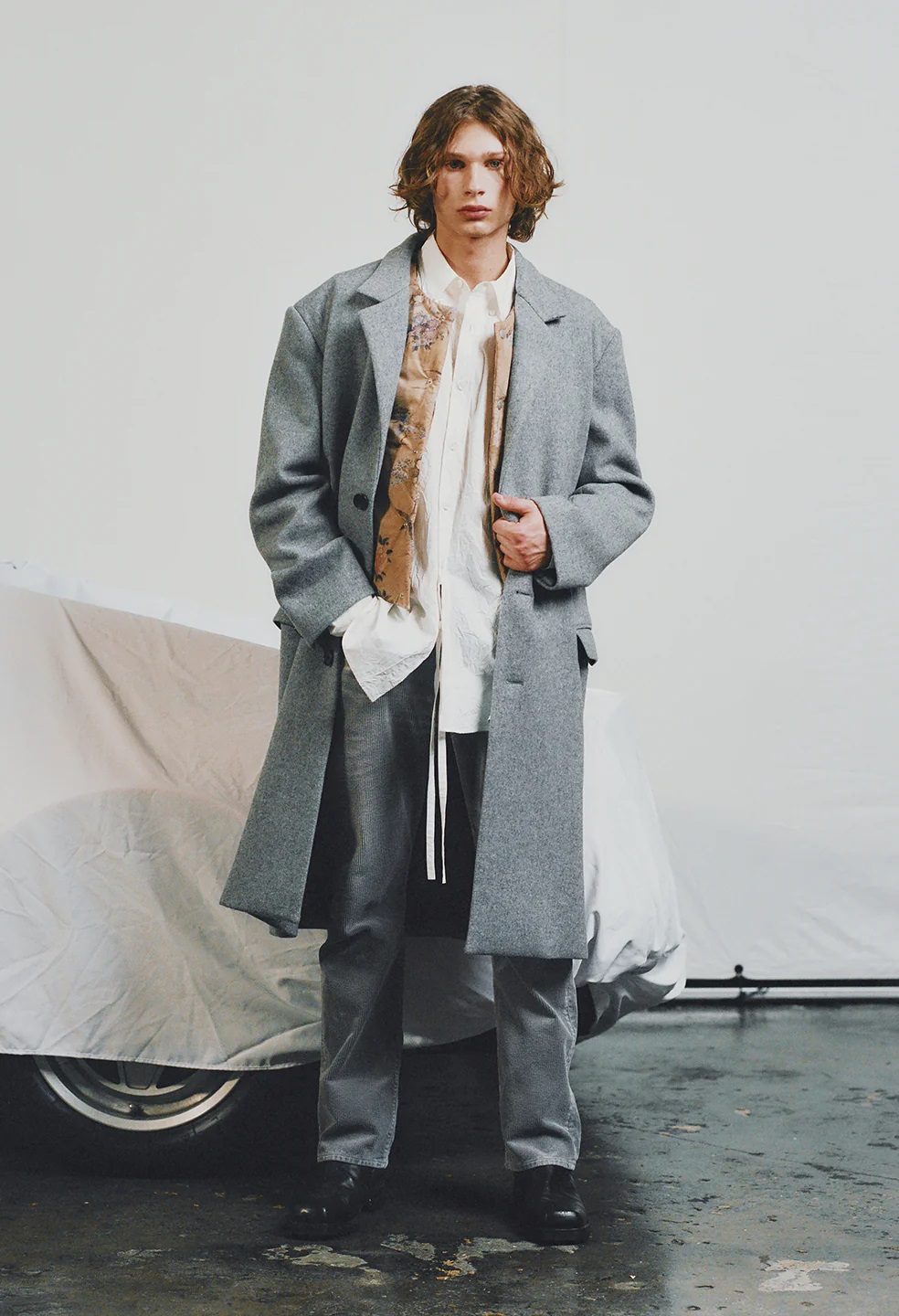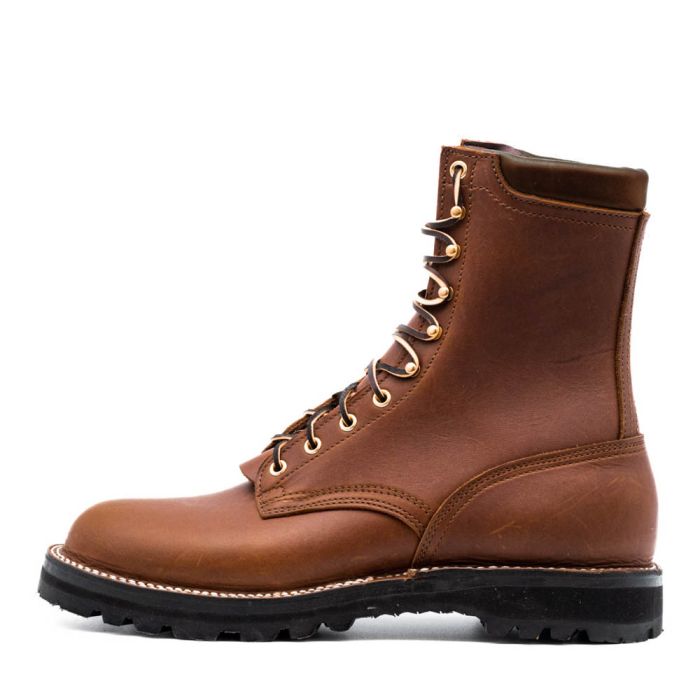Alexander Kabbaz
Distinguished Member
- Joined
- Dec 22, 2003
- Messages
- 1,276
- Reaction score
- 13
Knowing in advance that this review is going to get my butt kicked all over S&D, I considered for more than a week whether I would even write it at all. I realize that there are many properties of denim that streetwear afficionados prize and in that department, I can see why R for 45RPM's Jomon denim exceeds all expectations. The carefully considered criticisms which follow are not meant to dispute the extreme quality of Jomon fabric.
But there is a great deal more to creating a superb garment ... and one selling for $817. at Manhattan retail price ... than merely using the best fabric. As someone who has been creating and sewing what are considered better quality clothes for more than a quarter century, I was ... well ... simply appalled.
The actual stitching of the Jomon jeans was better than most. Nonetheless, selling for more than a top-flight shirt with fewer than 1/3 of the stitching, one would expect nothing less than close-to-perfect workmanship. Tradition aside, chainstitched seams don't hold a candle to lockstitched ones, for chainstitches unravel whereas lockstitches do not. Appearance you might claim ... but the exterior appearance of a lockstitch is the same as that of a chainstitch. It is merely a matter of longevity and strength which makes the lockstitch a better choice.
Frankly, though, that would not have been so consequential to me if it were not for the lack of what the garment industry terms "cleaning". And in that department, the R for 45RPM Jomon jeans were a failure. Today's super-speed sewing machines have what are called "underbed thread trimmers". These small knives automatically cut the thread at the end of a seam to speed up the sewing. To insure that the fabric is not damaged by the cutting knife it cuts leaving a "thread tail" on the garment roughly 1/8"-3/16" long. Similarly for buttonholes, when these are cut there is a bit of space between the knife and the thread which constitutes the buttonhole.
Better manufacturers then have an end-of-the-line person who, using a small pair of special scissors, trims all of these thread tails so the end of every seam is neatly finished. Additionally, that person also trims the loose threads from the insides of the buttonholes where they were cut by the automatic knife. In absolutely NO instance on the Jomon jeans was this done. The buttonholes were atrocious and virtually every seam had obvious thread tails ... made even more obvious by the contrasting red/gold/orange jeans thread color. As an example of the cost of quality, the person who does this on a shirt requires between 30-45 minutes to accomplish the task. When you are charging $800+ for a garment, this step is not an optional one.
Additionally, there were the untrimmed raw edges on the insides of the patch (rear) pockets. These pockets are attached by turning under the fabric edge and sewing them atop the denim. A better maker would either overcast these hidden raw edges with what is called an overlock (or serge) stitch to prevent the cloth from unravelling ... or at least cut them with pinking shears to accomplish a similar goal. This was not done and a plethora of loose threads were hanging out of the rear pockets.
Finally, there was the retail presentation. Yes, it makes perfect sense to me that denim lovers want to dip, wash, shrink, stretch, and shape their jeans at the beginning of the aging process. And I do certainly understand that better denims allow for a wide latitude in this area. But none of those considerations justify dumping an $800 garment on the counter completely creased, wrinkled, and virtually rolled up into a ball. If ironing is mistreatment of the denim, so be it. That does not prevent the maker from drying their prewashed jeans by laying them flat on a table rather than permitting them to dry in this jumbled state and calling it, as I was told, "character".
Insofar as the common elements of the offering of top-quality sewn products, I think I have earned the right to criticize sloppy workmanship. I apologise in advance for my dearth of streetwear knowledge if my review violates any "customs" associated with expensive jeans.
But there is a great deal more to creating a superb garment ... and one selling for $817. at Manhattan retail price ... than merely using the best fabric. As someone who has been creating and sewing what are considered better quality clothes for more than a quarter century, I was ... well ... simply appalled.
The actual stitching of the Jomon jeans was better than most. Nonetheless, selling for more than a top-flight shirt with fewer than 1/3 of the stitching, one would expect nothing less than close-to-perfect workmanship. Tradition aside, chainstitched seams don't hold a candle to lockstitched ones, for chainstitches unravel whereas lockstitches do not. Appearance you might claim ... but the exterior appearance of a lockstitch is the same as that of a chainstitch. It is merely a matter of longevity and strength which makes the lockstitch a better choice.
Frankly, though, that would not have been so consequential to me if it were not for the lack of what the garment industry terms "cleaning". And in that department, the R for 45RPM Jomon jeans were a failure. Today's super-speed sewing machines have what are called "underbed thread trimmers". These small knives automatically cut the thread at the end of a seam to speed up the sewing. To insure that the fabric is not damaged by the cutting knife it cuts leaving a "thread tail" on the garment roughly 1/8"-3/16" long. Similarly for buttonholes, when these are cut there is a bit of space between the knife and the thread which constitutes the buttonhole.
Better manufacturers then have an end-of-the-line person who, using a small pair of special scissors, trims all of these thread tails so the end of every seam is neatly finished. Additionally, that person also trims the loose threads from the insides of the buttonholes where they were cut by the automatic knife. In absolutely NO instance on the Jomon jeans was this done. The buttonholes were atrocious and virtually every seam had obvious thread tails ... made even more obvious by the contrasting red/gold/orange jeans thread color. As an example of the cost of quality, the person who does this on a shirt requires between 30-45 minutes to accomplish the task. When you are charging $800+ for a garment, this step is not an optional one.
Additionally, there were the untrimmed raw edges on the insides of the patch (rear) pockets. These pockets are attached by turning under the fabric edge and sewing them atop the denim. A better maker would either overcast these hidden raw edges with what is called an overlock (or serge) stitch to prevent the cloth from unravelling ... or at least cut them with pinking shears to accomplish a similar goal. This was not done and a plethora of loose threads were hanging out of the rear pockets.
Finally, there was the retail presentation. Yes, it makes perfect sense to me that denim lovers want to dip, wash, shrink, stretch, and shape their jeans at the beginning of the aging process. And I do certainly understand that better denims allow for a wide latitude in this area. But none of those considerations justify dumping an $800 garment on the counter completely creased, wrinkled, and virtually rolled up into a ball. If ironing is mistreatment of the denim, so be it. That does not prevent the maker from drying their prewashed jeans by laying them flat on a table rather than permitting them to dry in this jumbled state and calling it, as I was told, "character".
Insofar as the common elements of the offering of top-quality sewn products, I think I have earned the right to criticize sloppy workmanship. I apologise in advance for my dearth of streetwear knowledge if my review violates any "customs" associated with expensive jeans.



